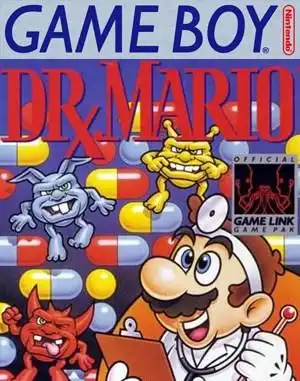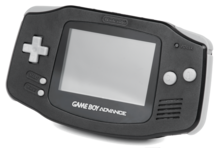Remember that catchy, almost clinical tune? The one that played while you frantically dropped colored capsules to clear a screen full of grumpy-looking viruses? If so, you likely remember the simple, yet utterly addictive charm of Dr. Mario. More than just a Mario spin-off, this puzzle classic carved out its own niche, challenging players with its unique blend of strategy and speed long before match-three games were everywhere.
Released back in 1990 for both the Nintendo Entertainment System (NES) and the Game Boy, Dr. Mario arrived during a golden age for puzzle games. While Tetris might have been the undisputed king, Dr. Mario offered a distinct flavour. It wasn't about fitting falling blocks; it was about playing doctor, albeit a very unconventional one who throws pills at viruses.
The Simple, Addictive Gameplay
The core mechanic of Dr. Mario is straightforward, which is part of its genius. Viruses of three colors – red, yellow, and blue – inhabit a tall, rectangular bottle. You control Dr. Mario (or just a gloved hand in the Game Boy version) as he drops two-sided capsules, also colored red, yellow, or blue.
Your goal? Line up four segments of the same color – either part of a capsule or a virus – horizontally or vertically. When you make a match, those segments disappear. Clear all the viruses from the bottle, and you win the level!
Sounds easy, right? It starts that way. But as you progress, the viruses multiply, the drop speed increases, and the bottle gets crowded. Suddenly, those simple matches require quick thinking and careful placement to avoid getting boxed in.
More Than Just Matching
While the basic premise is simple, Dr. Mario offered surprising depth and challenge, especially for its time.
- Difficulty and Speed: You could adjust the initial difficulty (how many viruses start in the bottle) and the drop speed, allowing for casual play or intense, high-speed sessions.
- Scoring: Clearing viruses awarded points, with bonus points for clearing multiple lines or creating chain reactions where falling capsule pieces cleared more viruses. Chasing a high score added a competitive edge, even in single-player.
- Multiplayer Mayhem: This is where Dr. Mario truly shone for many retro gamers. A head-to-head mode let two players battle it out. Clearing lines on your screen would send "garbage" blocks (single-color segments that couldn't be cleared on their own) to your opponent's bottle, potentially screwing up their strategy. This turned the calm puzzle-solving into a frantic, trash-talking showdown!
From NES to Switch: Dr. Mario's Many Lives
One of the reasons Dr. Mario remains relevant is its incredible longevity and presence across nearly every Nintendo console generation.
- The Originals: NES and Game Boy (1990)
- Remakes & Bundles: Tetris & Dr. Mario on the SNES (1994) offered enhanced graphics and sound.
- Re-releases: It showed up on the Classic NES Series for Game Boy Advance (2004), the Wii U Virtual Console, and the Nintendo 3DS Virtual Console.
- Modern Availability: You can currently play the original NES version of Dr. Mario as part of the Nintendo Switch Online service, allowing a new generation to experience the retro charm and letting old fans revisit it easily.
This long history means many players have different nostalgic memories of the game, whether it was on a bulky CRT TV with the NES or squinting at the Game Boy's green screen on a long car ride.
Why We Still Love Dr. Mario
Decades later, Dr. Mario holds up as a fantastic puzzle game. Its design is clean, the mechanics are easy to grasp but hard to master, and the music is instantly recognizable (and incredibly catchy). It's a perfect example of Nintendo's ability to take a simple concept and polish it into a timeless, addictive experience.
It might not have the sprawling worlds of Mario's platforming adventures, but for pure, unadulterated puzzle fun, busting viruses with Dr. Mario is a prescription for a good time that still works today.
Frequently Asked Questions (FAQ)
- What is the goal in Dr. Mario? The main goal is to clear all the viruses of red, yellow, and blue from the bottle by matching them with colored capsule segments.
- How do you clear viruses? You clear viruses by lining up four segments of the same color (viruses or capsule pieces) in a row, either horizontally or vertically.
- Is Dr. Mario available on Nintendo Switch? Yes, the original NES version of Dr. Mario is available to play as part of the Nintendo Switch Online service.
- Are there other Dr. Mario games? Yes, the game has had several sequels and spin-offs released on various Nintendo platforms over the years.


